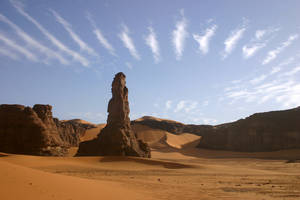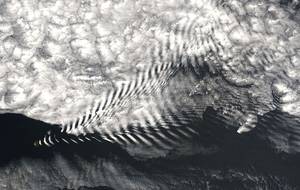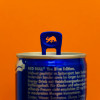Ingredients
An empty 2L lemonade bottle
1.5l or so of vegetable oil.
Food colouring
Water
Instructions
Fill the bottle about 1/3 full of water, and add a couple of drops of food colouring.
Hold the bottle horizontally and slightly lift one end to cause a wave to travel along the bottle - how long does it take?
Now, gently, top the bottle up with vegetable oil, put the lid on, lie it on its side, and wait for the oil and water to separate. Now lift one end and try to make waves in the bottle. Do you notice a difference?
Result
You should find that the water with oil over the top produces surprisingly slow waves.
Explanation
To understand what is going on it helps to look at a normal water wave.
If one part of the water surface is higher than the rest of it, in some places there is more water above you in some parts of the bottle than others.

This means that the pressure will be higher under the top of the wave than at the bottom.

Water flows from areas of high pressure to areas of low pressure.

This means that the water moves from the high area to the low area, but because the moving water has momentum, it overshoots creating a peak in a new place, and the wave moves.

The wave with oil
The water is now covered with oil, which whilst being less dense than water (so it floats on it), is still probably 2/3 as dense, this means that the pressure below the shallow water is produced by both the weight of the water and the weight of the oil.

As the water gets shallower the depth of oil gets greater so the change in pressure is much less.

This means that the pressure difference on the water is much less, and they have to move both the water and the oil, so the flows are much more slow.

This means that the wave on the surface travels much more slowly.

Of course a normal water wave has air above it, which will have a slight effect on the speed, but it has such a low density there is very little effect on the speed.
This form of wave is found wherever you have two different density fluids sitting above one another. They don't even have to be different substances, a warm (less dense) air mass sitting on a cold (more dense) can form waves, and if a cloud is on the edge of forming, the pattern can be made visible.

Sometimes the source of the waves can be obvious, like this wake from wind blowing over an island in the Pacific.











Comments
Add a comment